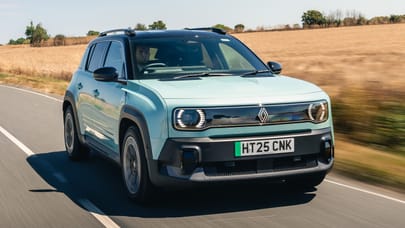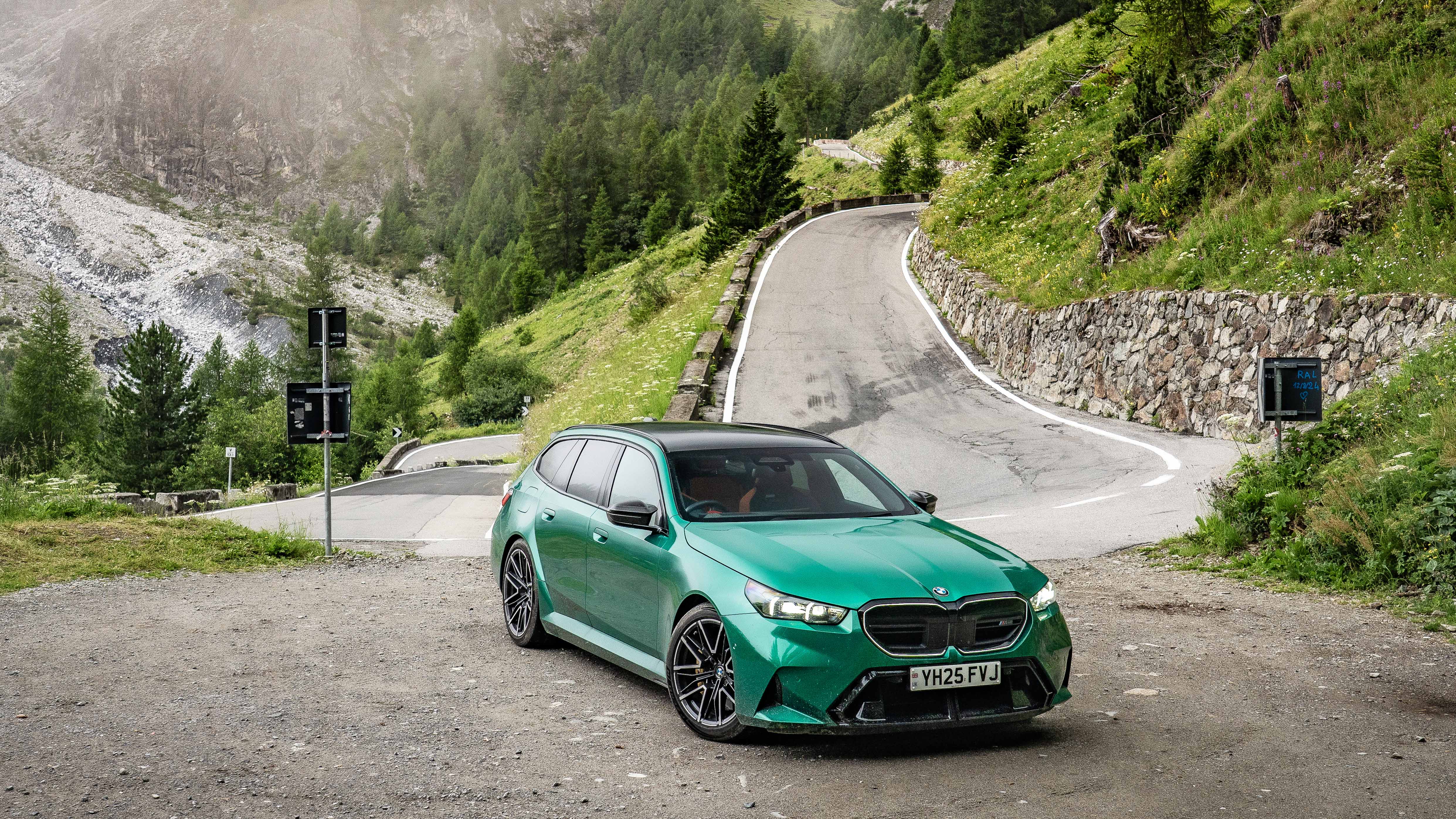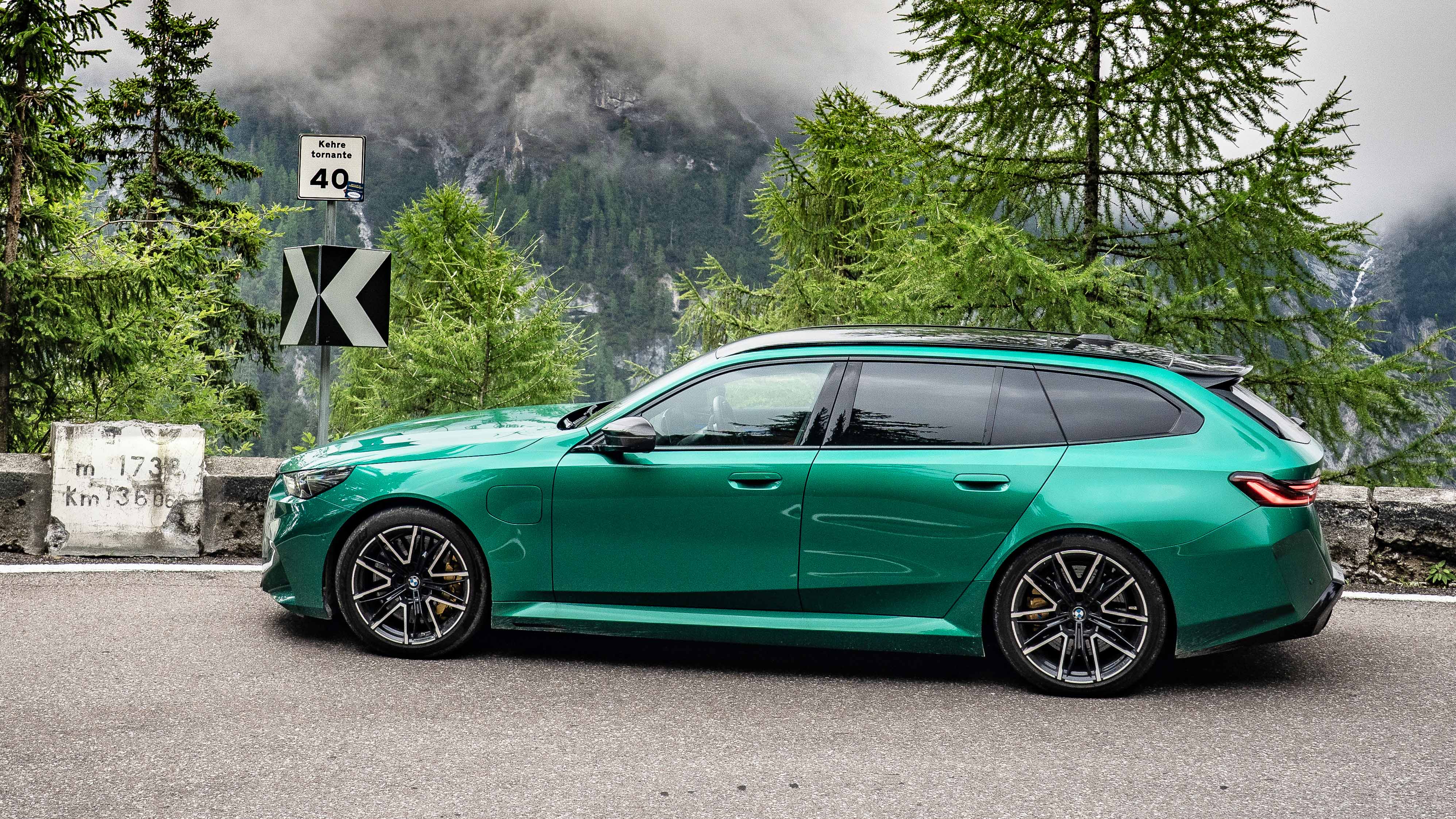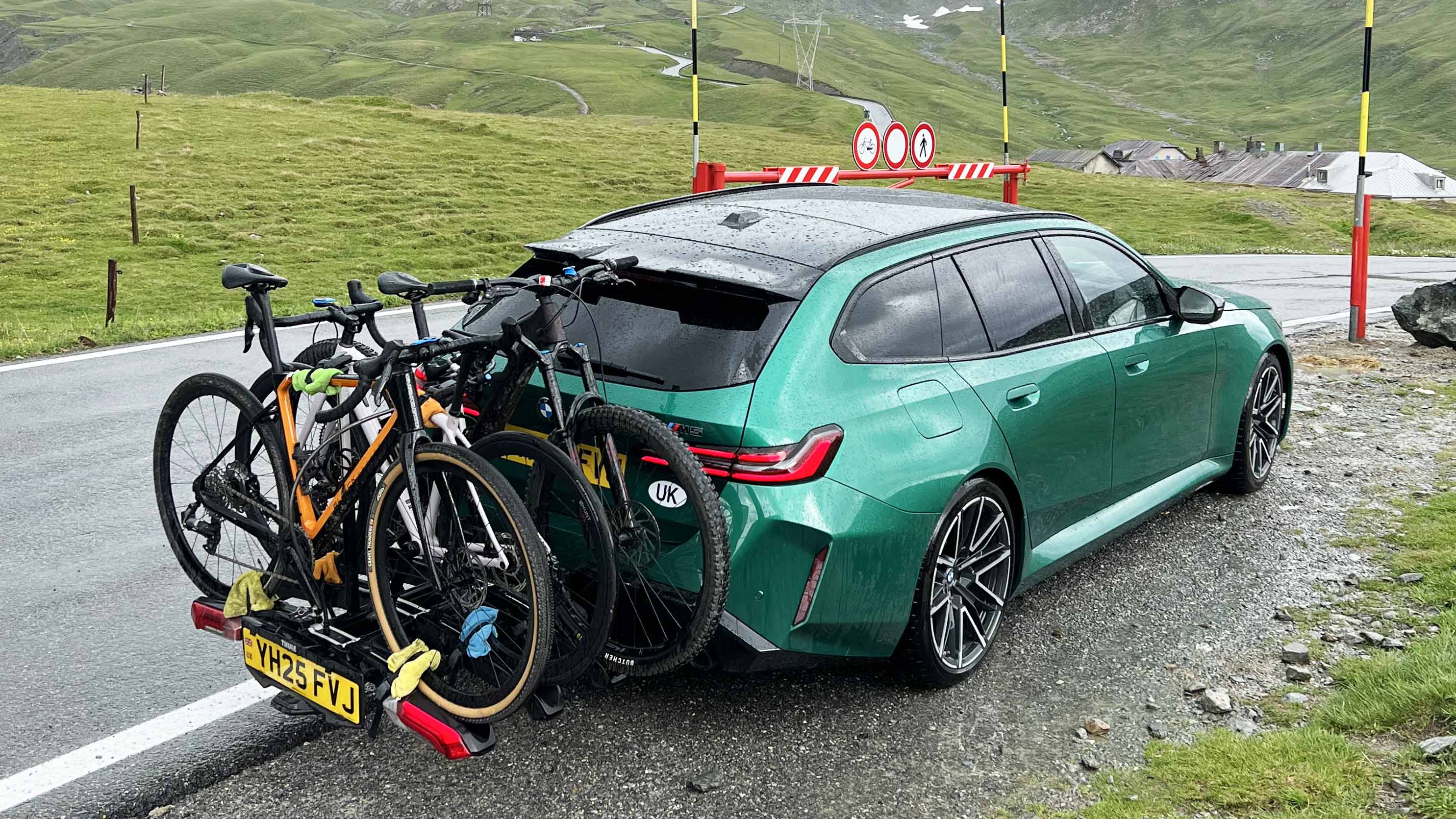
SPEC HIGHLIGHTS
- SPEC
M5
- ENGINE
4395cc
- BHP
717.4bhp
- 0-62
3.5s
BMW M5 Touring vs Stelvio Pass: can this heavyweight feather its way up an Italian mountain road?
Here’s an incompatible pair: BMW M5 Touring and Stelvio Pass. As long as a limo and heavy as a Defender, it should tackle the 48 hairpins that define this iconic Italian mountain pass like a bowling ball on a marble run: with severe clumsiness and a very real concern that the whole structure could collapse underneath it.
What a structure, though. A vertical mile of drop over little more than ten horizontal, narrow, bumpy and fantastically unforgiving miles, it’s hell for brakes, traction, gearing, torque and differentials. I dreaded what the Stelvio was going to do to the M5. And vice-versa, actually.
Let’s start with the brakes, and a suggestion. The Ultimate Pack is £18,900. Sorry for anyone out there speccing an M5, but that’s a ‘must tick’ box. Not for the niceties of the panoramic roof or vented seats (and certainly not for the Driving Assistant Professional), but for the ceramic brakes. They’re essential even if you’re not on the Stelvio. Admittedly I haven’t driven an M5 without them, but with them it stops like a car half its weight. Great power, confident underfoot, not once on the descent from the 2,750m summit do they lose any bite or power.
And on the way up, something close to revelation: the rear-steer equipped M5 fits around every hairpin without ever having to reverse. But what impresses me most is the drive out of corners. Finally, besides fuel efficiency, here is an actual benefit of the M5 going hybrid: lag-free, any-gear punch out of hairpins. I just leave it in third most of the time, because as soon you touch the throttle you have 194bhp and 206lb ft to get on with things while the turbos are sorting themselves out. Power is metered out smoothly and precisely, traction is even and balanced, there’s no hiccups or stutters, it’s just deeply muscular and suitably thunderous. In short, it punches out of corners in a way that – like the brakes – makes the M5 seem much lighter than it is.
The trickier bit is what happens between the hairpins. Subsidence is an ever-present issue here, bending and cracking the surface so it churns and bucks. Now I notice the M5’s 2,475kg mass and have to make allowances for it. Even with the M1 button pressed (medium suspension stiffness, everything else ramped up), body control suffers. A wet, off-camber lump has the back end lurching sideways, sharp crests need a double bounce to bring back under control. Nothing wrong with the stopping and going then, and even the turning isn’t bad, but when the surface starts kicking and screaming the M5 struggles. And it always feels big. No, enormous.
But that aside it’s flattering to drive, can be guided smoothly and rapidly about the place. And the getting down here and back was effortless. 830 miles in one hit heading home? No issue. It thundered quietly along, happiest when it found sections of derestricted autobahn – although having bikes on the back curtailed the fun somewhat. 24.4mpg overall, compared to the 23.9mpg it recorded with a roofbox on a ski haul a few months back (see report 3).
Issues? The hybrid is always keen to cut the engine on the coast into tollbooths (see also roundabouts etc), so when you accelerate away it’s a bit lame, and the car lurches as the engine fires back up.
Assisted driving (admittedly useful on a long haul, and BMW’s steering and lane keep remains the best there is) doesn’t work if anything is connected to the towbar – sensible if you have a trailer connected. But this is only a bike rack. And the car knows that, because I told it what’s connected when it asked.
And the driver’s screen design is a big bugbear. It’s just so clunky and poorly laid out, with bar charts and graphs rather than dials. BMW used to do the best dials and instruments in the world. Someone senior needs to go and check out an old E39.
The standard displays put key info at the edges of the screen, so your eyes have to flick left and right. Change to Sport displays (after a plunge through the central screen menus, obvs) and the key info comes to the centre – mph, revs, gears. Much better. But in that mode, you can’t have cruise control. Why the hell not? All these options, but the option I actually want, I can’t have.
Moreover, the cabin just doesn’t feel very sophisticated or driver-centric. Well made, good seats and all the rest, but jarring to use much of the time, I still don’t find it instinctive to operate. But as a support car for the Stelvio’s 200th birthday celebrations, a car to munch distances and mountain passes with equal facility, it does take some beating. That’s what it was designed for, and although I still fundamentally disagree with it being this heavy (and know how much better it would be if it lost half a tonne), I am gradually coming round to its way of thinking.
Thanks to: Stephan Gander, www.bella-vista.it
Featured

Trending this week
- Car Review
BMW iX3






